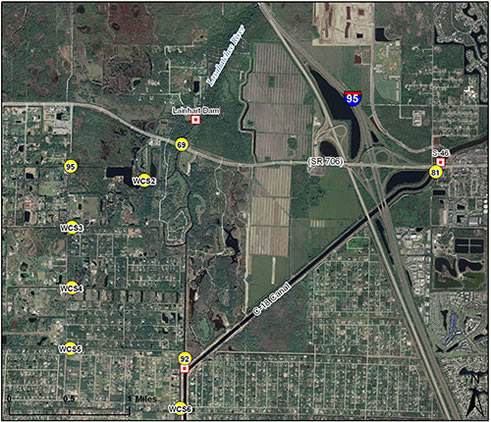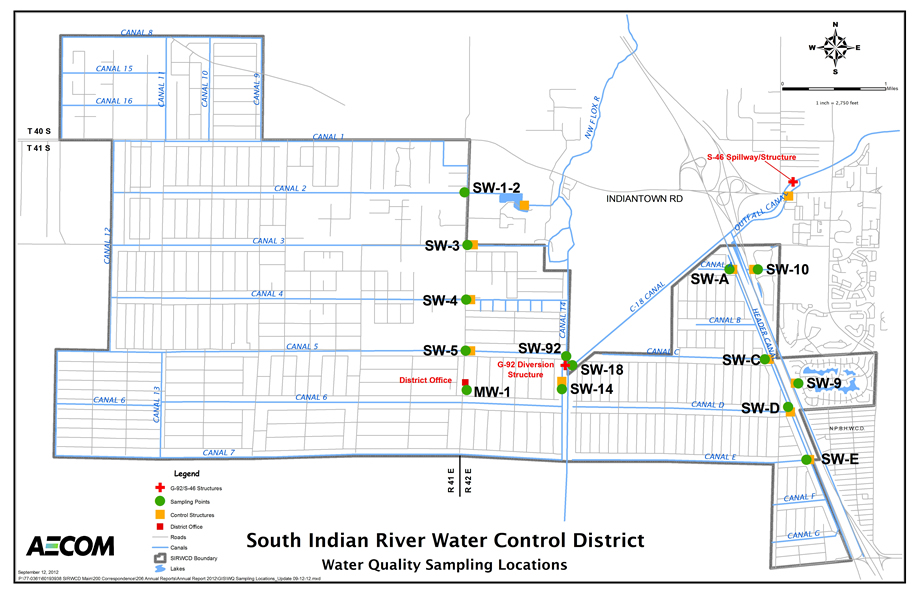Water Quality Monitoring
 Due to the many ecological and regulatory pressures being exerted over the Loxahatchee River Basin area, it was recommended that South Indian River Water Control District sample and monitor water quality within and adjacent to its boundaries. South Indian River Water Control District had historically taken samples through a co-operative agreement with the United States Geological Survey (USGS), but due to reduced funding by the federal government, the program was abandoned.
Due to the many ecological and regulatory pressures being exerted over the Loxahatchee River Basin area, it was recommended that South Indian River Water Control District sample and monitor water quality within and adjacent to its boundaries. South Indian River Water Control District had historically taken samples through a co-operative agreement with the United States Geological Survey (USGS), but due to reduced funding by the federal government, the program was abandoned.
The Loxahatchee River District (LRD) has been obtaining water quality samples in recent years. The existing sampling locations done by LRD are depicted on the graphic to the right. Due to the new water quality legislation being proposed at the time, the Board of Supervisors had instructed staff to implement a water quality monitoring program that augments and expands the current LRD program.
In July 2011, the District entered into a contract with a water sampling and testing firm. The samples are tested to analyze the surface water and groundwater for various metal, organic and inorganic contaminants as well as water quality criteria. Staff monitors these locations on a monthly basis. Samples are only taken when the District discharges outside its boundaries. This information is being used to monitor the District’s discharge and will be used in future analysis as needed for the NPDES permit and the Reasonable Assurance Plan (RAP).
On March 28, 2016, FDEP approached the Loxahatchee River Management Coordinating Council (LRMCC). on the proposed development of a Total Maximum Daily Load (TMDL) within some waterbody identification units (WBID) within the Loxahatchee River that have shown impairments in Chlorophyll a (nutrients) and Fecal Coliform. FDEP suggested that instead of development of a TMDL through the state process, LRMCC could take the lead on developing the RAP, which would replace the TMDL and subsequent Basin Action Management Plan. The RAP is a stakeholder driven plan that examines the impairments and prepares solutions to aid in restoring the Loxahatchee River from impairment. FDEP is developing a TMDL concurrently with the RAP process until the RAP process has been finalized by the stakeholders.
For print versions of these images, please see the District Engineer's Annual Report.
